For my solo exhibition Soft Water, I'm exploring circularity, transformation, and "inter-creation", using water as a metaphor that runs across the body of work.
Archetypically water is a symbol of that which is unconscious, mysterious, healing, and alchemical. Water moves in waves like it is breathing. It reacts to the moon. It gives life.
I focus on what I think of as the soft qualities of water – how it transforms, flows, and changes through cycles, with its own rhythm, memory and time.
My practice is an ongoing and ever-expanding research where works transform and translate between one another, creating a spiraling way of production and thinking.
Over the years, I have been creating diagrams as a way of visualizing language and ideas by combining drawing and writing. Through the act of diagramming, new levels of understanding can be explored and be revealed.
Water has its own diagrams which have their particular language. They have cycles within cycles, they have arrows, there are rainbows. My current studio in London is surrounded by water, which is how I began comparing my ways of creating, with the ways of water. I wanted to think with water, and to compare its qualities with my own language and forms.
In this body of work, visual elements, materials, colors, processes, and tools, are constantly transforming and generating each other, following and creating its own rules and systems, expanding its own universe. There are things that are constant, like the line, which is the single unit from which a bigger work evolves, taking on different forms.
The painting Everything is made from interwoven lines that create a meandering looping shape, like an expression of the path that my research follows. The sketches leftover from making this painting go on to become the artist's book Parts I Book. These remaining materials also get made into the Press Print (Triple Chain), where the strips of paper have been rolled under a heavy press, creating a composition of flattened and folded paper lines whose final result is out of my control, and into the power of the press. The papers also get shredded into lines, and become the Tassel Knot – or these shredded lines are woven into the Paper Dish Rag. Other leftover papers get compressed and made into paper pulp, to become sculptural objects that live inside the wall diagram, like Paperpulp Flower. In the diagram I use the ceramic pieces that were used as molds to create those paper pulps, and thus the process continues, going back to the beginning but transformed, forming a new cycle of thinking and making.
The Soft Water Diagram is a circular diagram made of dualities. On the left triangular poem, words like "sand", "ampersands", and "suns" speak of the passing of time. On the right one, a petal becomes water becomes an endless game of transformation and translation. The two poems are connected by a curve, the "current", which just like a water stream it speaks of both the "now" and the "flow". Above, the moon affects the water, raining ceramic teardrops down to the circum polar, the deep water masses in the oceans. A circum polar is also a type of star which seems fixed in place with other stars rotating around it, guiding us in celestial navigation.
There is a moment, just like in painting, where a diagram becomes its own thing and goes on its own path, not totally in my control, but which I then follow to see where it's going. Diagrams have become another one of my tools, but they've also become a work on their own – I work with them and they work through me.
I did not intend for the diagram to make itself into the shape of a yin yang – this is the part that the diagram did on its own. And to be honest, I didn't like that this happened at first, I found it naff or tacky, or I simply didn't want to take it there.
But as I tried to move it away from this symbol, I understood that this was the path that the diagram made, and that I simply followed. I think of this as "inter-creating" – where I create a work, and my work and I reciprocate each other. In this way, the yin yang is the ideal expression of the mutual inter-creation between myself and the work. I create the work, the work creates itself, it creates me, and I create the work. I follow and flow – flowowl? I flowllowl like soft water.
“In one drop of water are found all the secrets of all the oceans;
in one aspect of You are found all the aspects of existence.” – Kahlil Gibran Jr.
▄▀█▐▄▀▐.
The black-glazed ceramic pieces came from my thinking about the essence of words, and how to translate materials as if they were languages. The shapes are abstractions of words, arranged together as in a paragraph. The forms are created from tracing around the outline of words, and abstracting them further and further to reach these world-like shapes. S■█etimes they retain the ability to be read, but their legibility is pushed to the limit to remain with only their essence.
With these pieces, I've been thinking about translation, and how rather than translating from language to language, it can be done from material to mat▄▀ial. Using terracotta, I can explore this material's own limitations, such as the way it shrinks in the kiln, or the type of softened corners that it produces. Responding to these limitations is like finding the handwriting of clay.
During my formal studies on typography, I was taught how to see letterforms carefully by simultaneously looking and not looking at letters. By focusing on things like the negative forms, or the spaces between letters and between w▀rds, I was trained to pay attention to the form and look beyond the letters, seeing and not reading, and understanding how words change their evoked meaning depending on the form and arrangement of the letters.
With these pieces I've been questioning what else can w■rds be, how else can they behave, and how I can invent my own lett▀rforms and ways of writing and reading that follow █y own rules of lang▄▀ge, translation,▐nd writing, while looking at █aterials and its transf■r█ation as a way of translation. ▌█ou▄h▐he pl▄▀ts and▐o■k for th■ █o▀▄h ▐he pl▄▀▐s a▀d ▐o■k fo▀ th■▐▀▄h ▐▐■ p▌▄▀▐s ▐▀d ▐■■k ▀o▀ th■ █▐▀▄■ ▐▐■ ■▌▄▀▐■ ▐▀▄ ▐■■█ ▀▄▀.
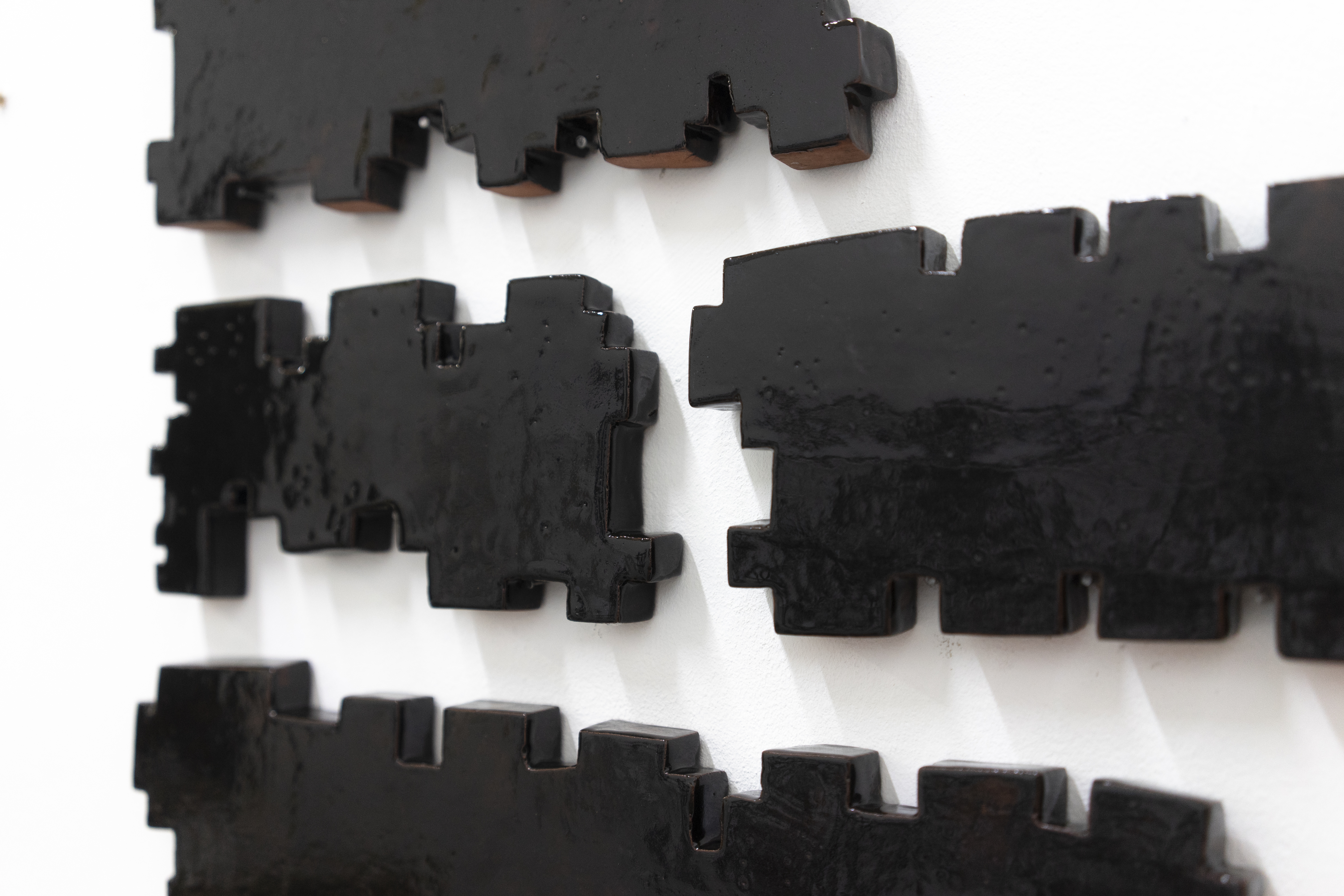
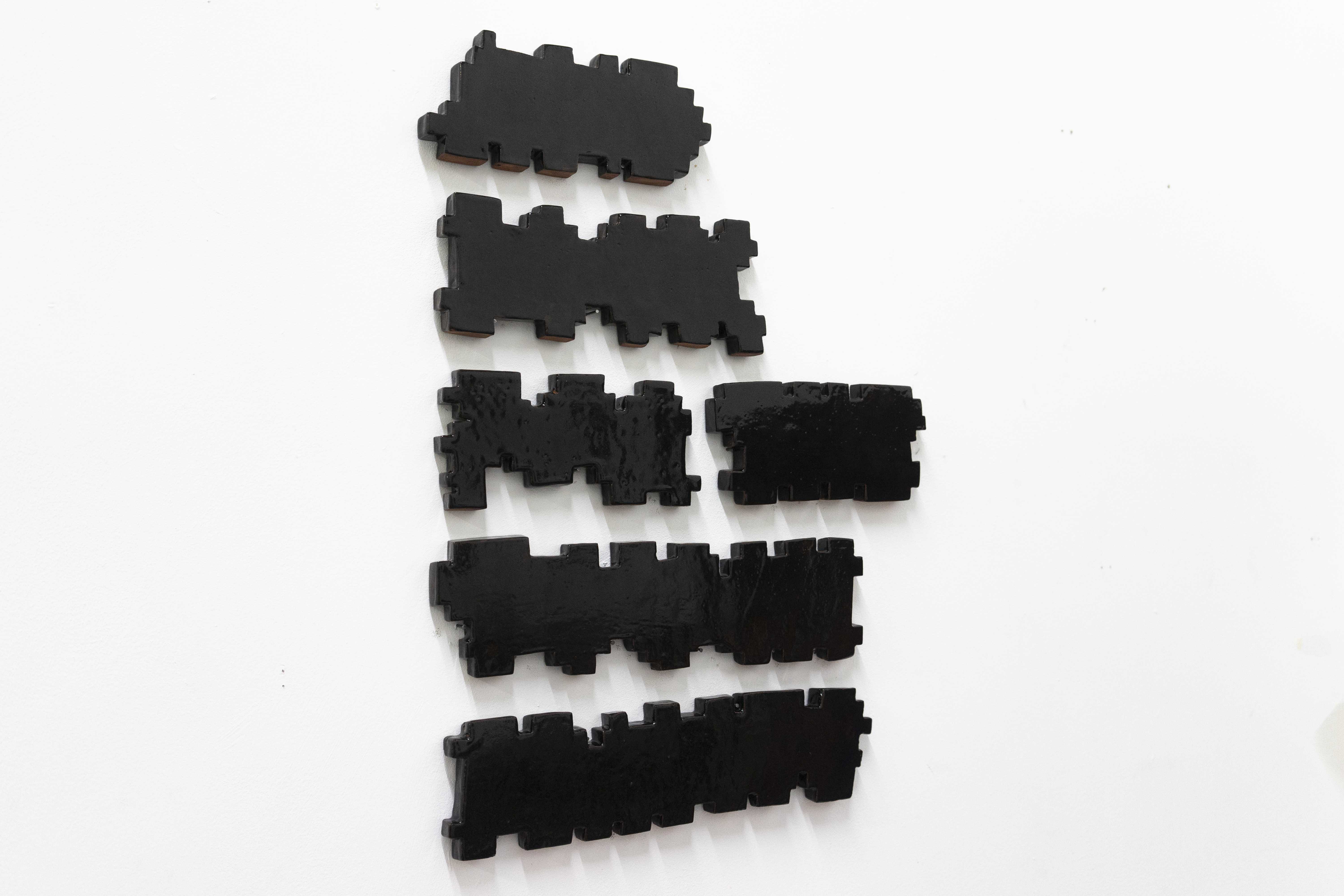
Jacarandá from the 'Pressed Flowers' series.
At this time of the year, the Jacarandá blooms in Buenos Aires, covering the floor in a purple carpet of petals.
At the same time, in London where I am now, the pavements are full of yellow leaves that are falling from the trees.
Flowers and leaves mark the passing of time and cycles in a year, and I like the parallels and differences happening across both hemispheres.
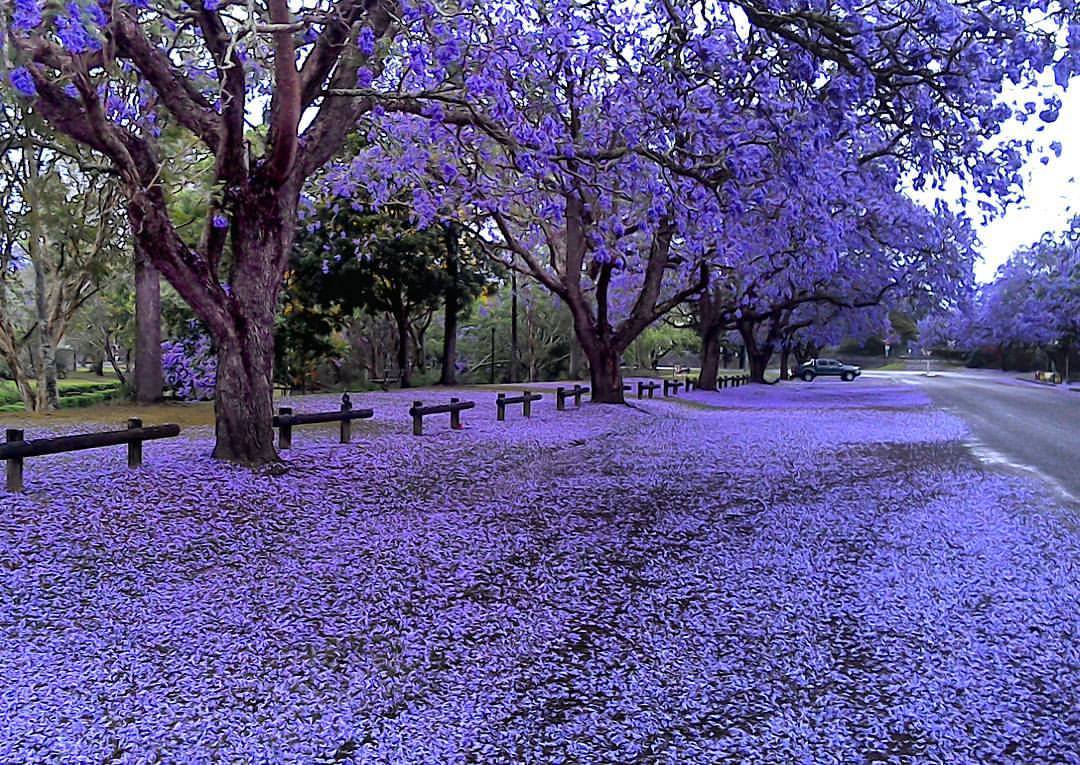

I started cutting flowers without really knowing why I was doing it, becoming almost possessed with the movement of the knife going around the paper, and the flowers becoming physical once they're cut out in their silhouette. The childhood song Jacarandá by the Argentinian María Elena Walsh came to mind the next day, and some coincidences happened then: The song mentions tissue paper ('el cielo en la vereda dibujado está con espuma y papel de seda del jacarandá'), which is what I was using. It also talks about the colors light blue and purple that I was painting the papers with, and the time of the year being now when the flowers blossom. All of these connections came afterwards, which surprised me and made me think of them as synchronicities.
As a continuation of the thinking behind my "Pressed Prints" pieces, I started pressing the flowers. In those previous pieces, I would spray the paper with a mist of water to ease the flattening. So with these flowers, I thought of adding some essential oils to the water that I mist them with, to give the flowers another sense of themselves.
 .
. 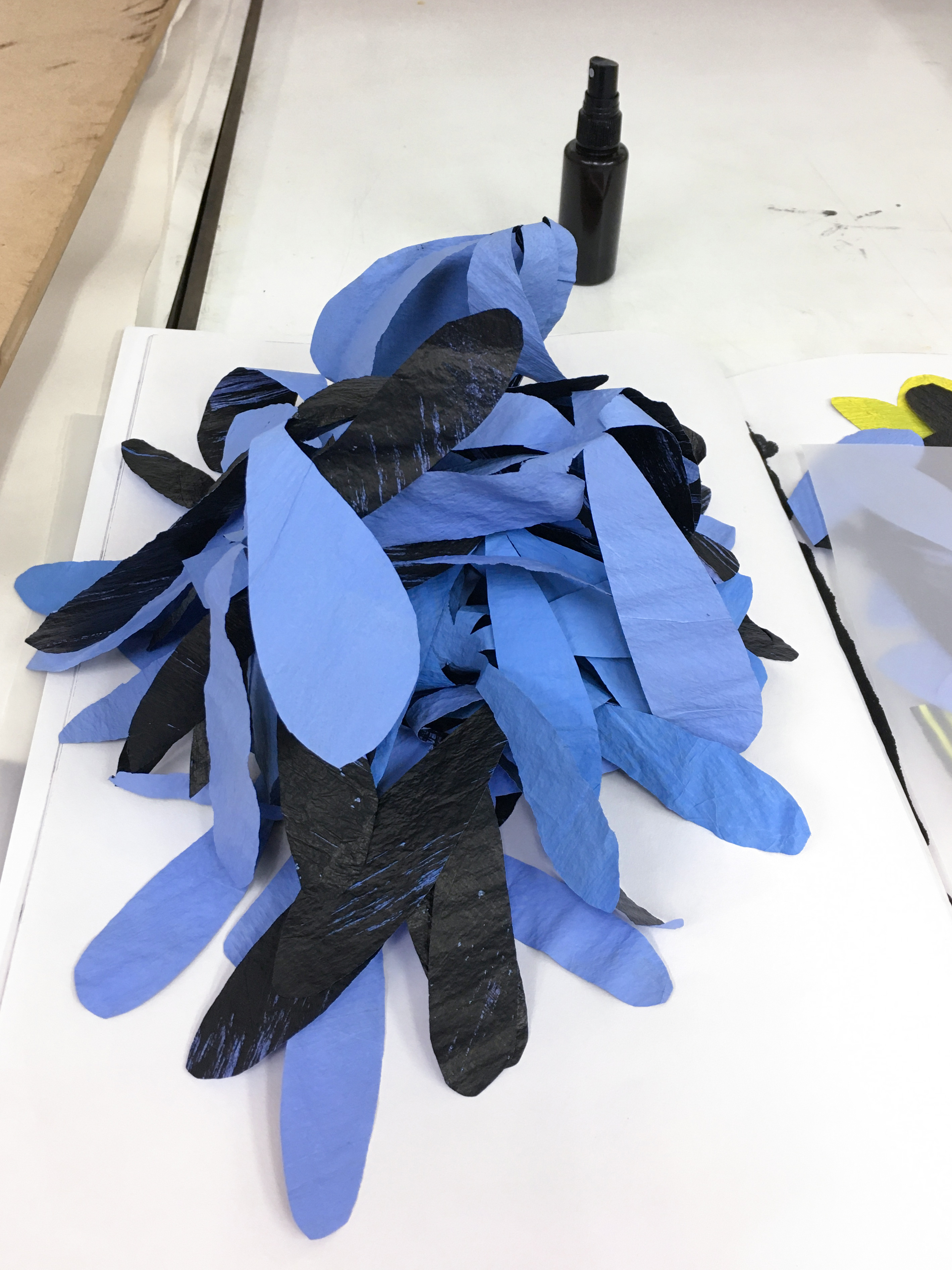 .
. 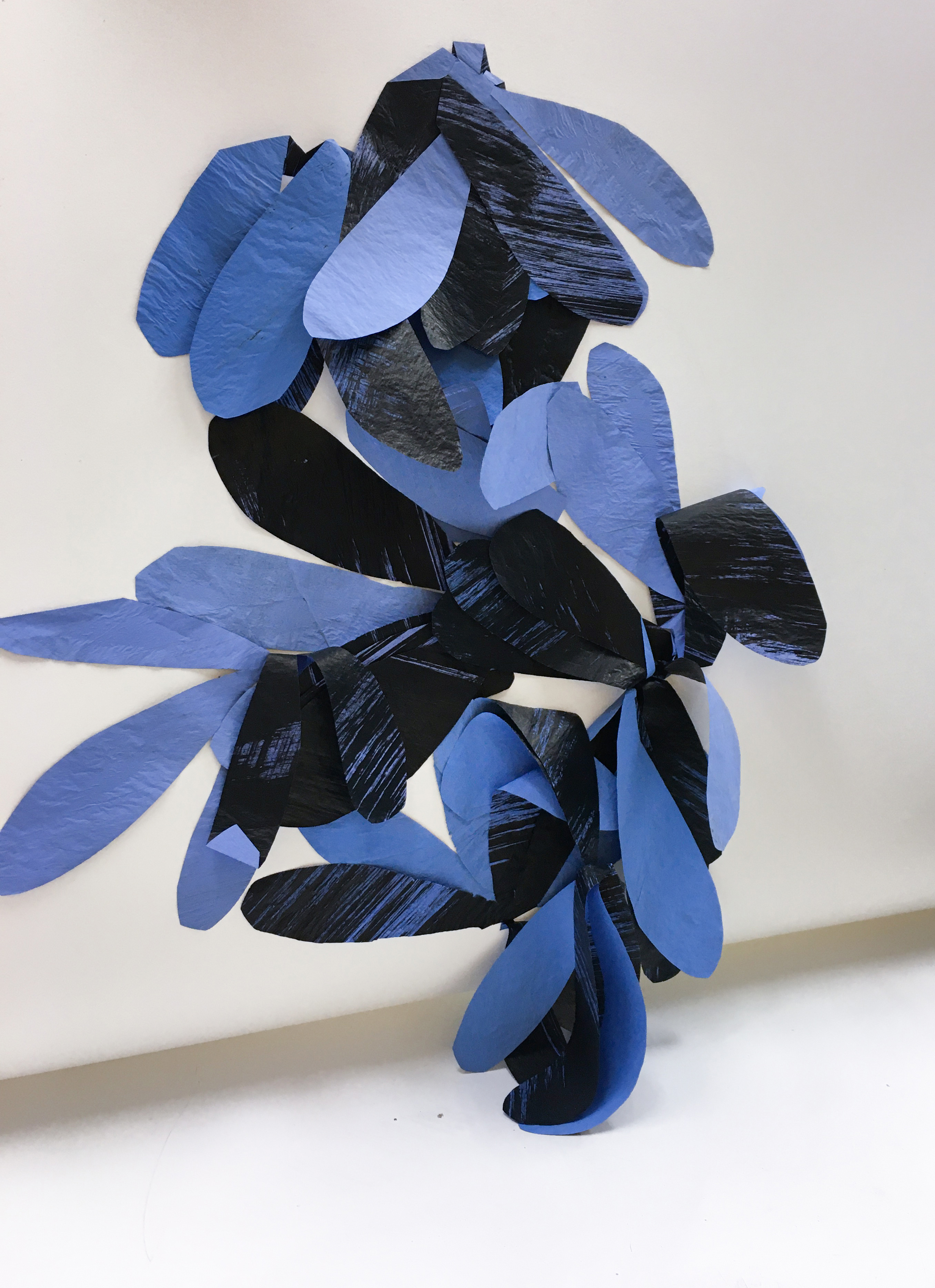
Another thing happened then, which was that my aunt told me that the word 'Jacarandá' in the Guaraní language means fragrant. It was another parallel to what I was doing, of bringing smell into the thinking. The fragrance of the flowers are actually very subtle and soft, I wouldn't think of these flowers as particularly having a smell or being fragrant.
Now I’m using the press in other ways, letting it surprise me with outcomes and with the way it behaves. Sometimes it's as if the work wants to do itself, and it brings me the understanding and connections afterwards. Those are some of my favorite moments in my practice, when I'm following it as it takes inside its maze, to find a flower at its center.

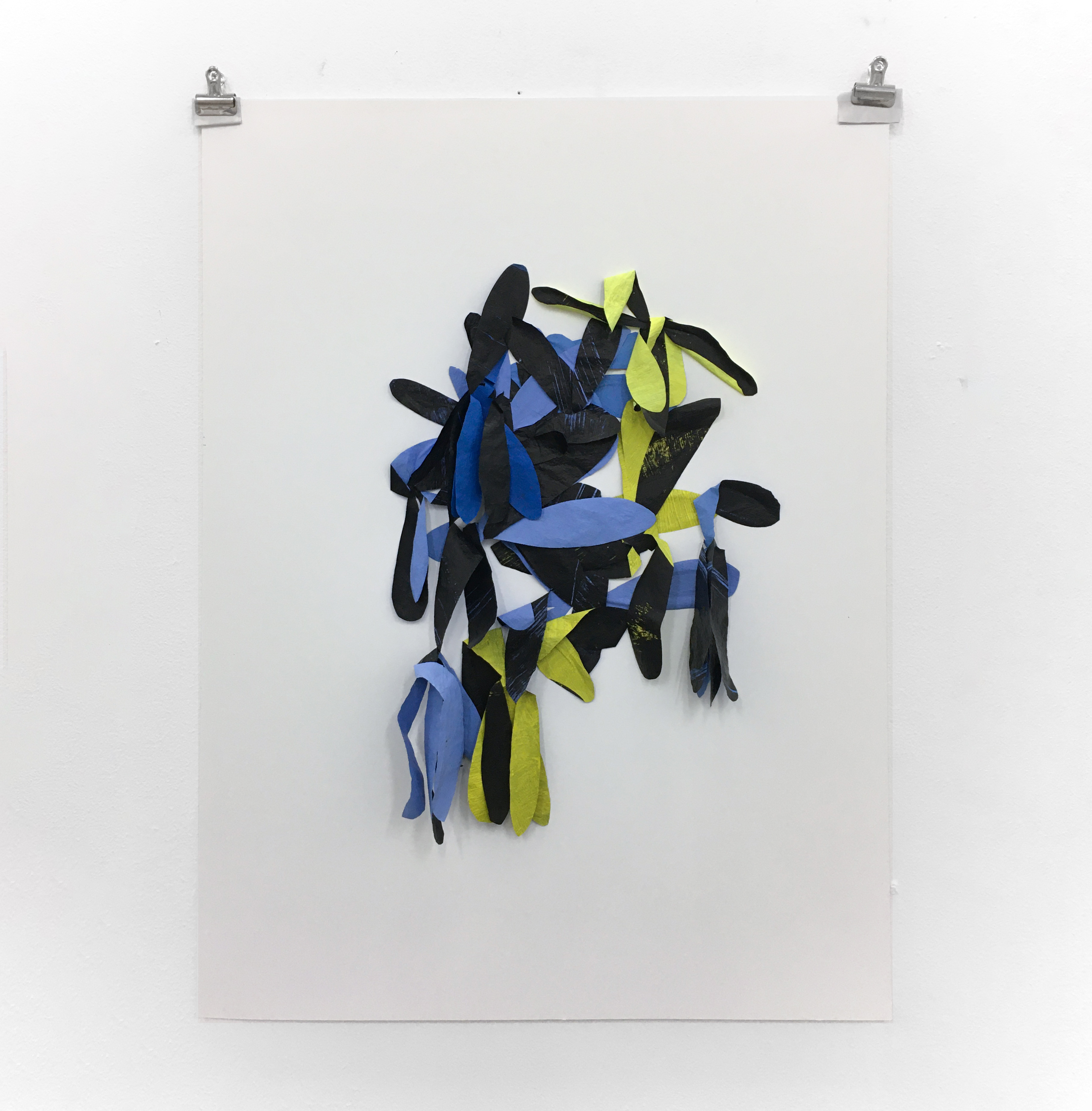
Notes about three of my pieces in the show re:assembly at Nationale, Portland.
The paper tapestry, paper dishcloth, and sketchbook are works exploring my current interest in textile objects and techniques.
All these pieces use paper as the main material, and parallel lines as a constant gesture. These lines are developed from marks generated by custom-made tools, and as a result of my background and research on letterforms in typography.
Paper Tapestry #2 explores different possibilities of what lines can be and can do; the black lines are like images of threads in woven materials, which combine to create a surface, which when cut becomes dimensional. The tassels are made from leftover scraps of paper used when making the piece.
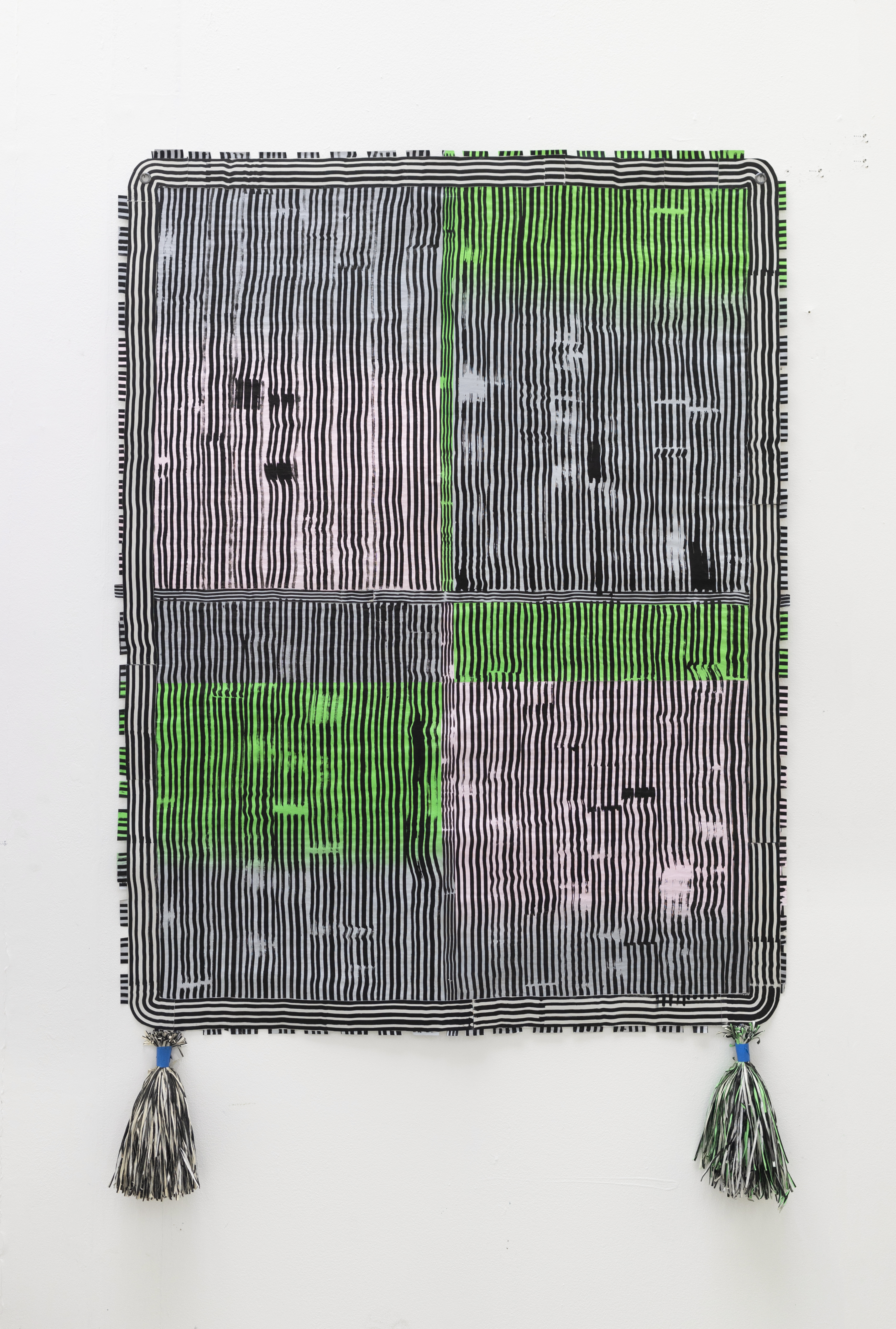

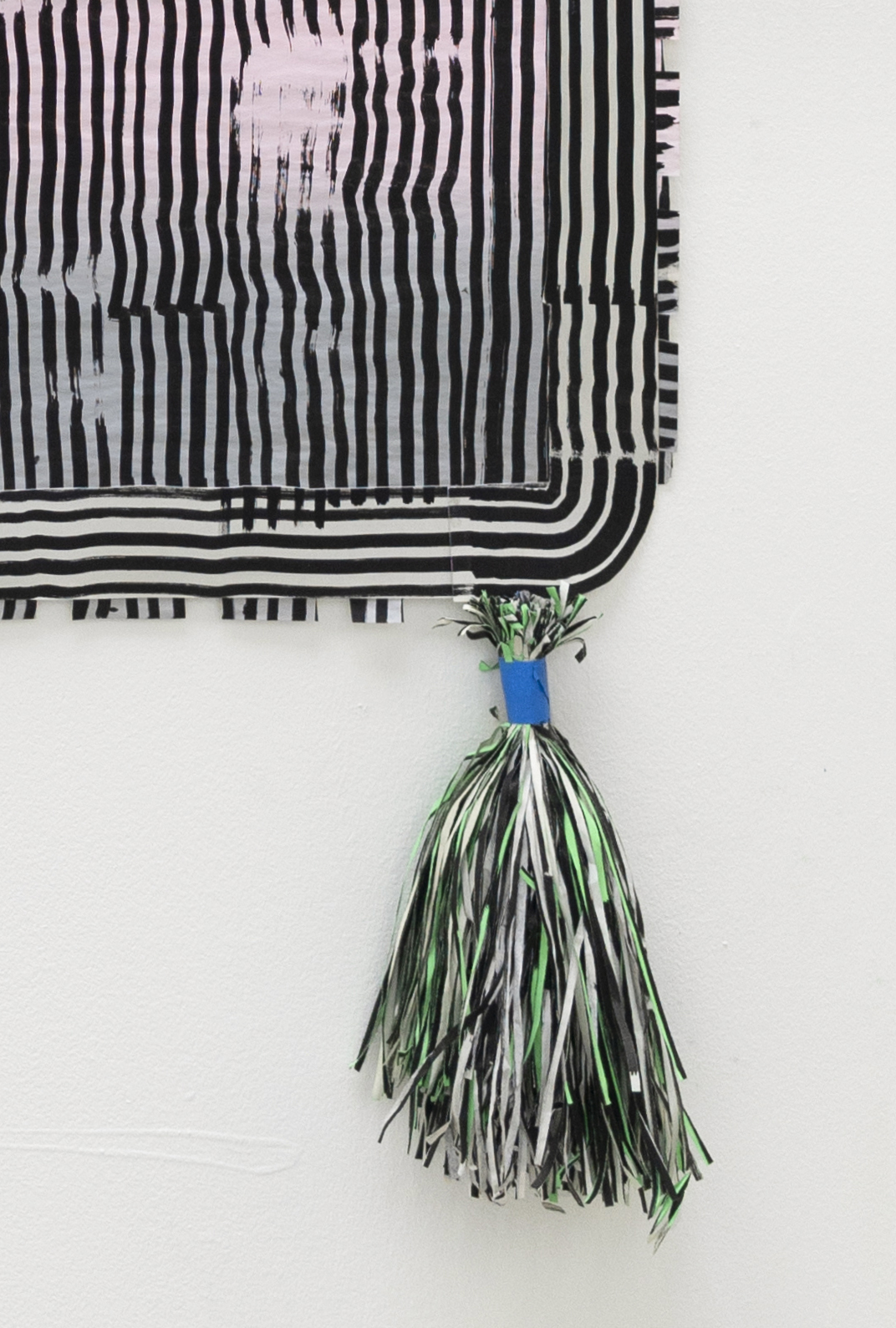
In the book Lines by Tim Ingold, he explains the relation between lines and the surfaces on which they are drawn. Threads can turn into traces and vice versa, and through the accumulation of transverse lines, surfaces are formed.
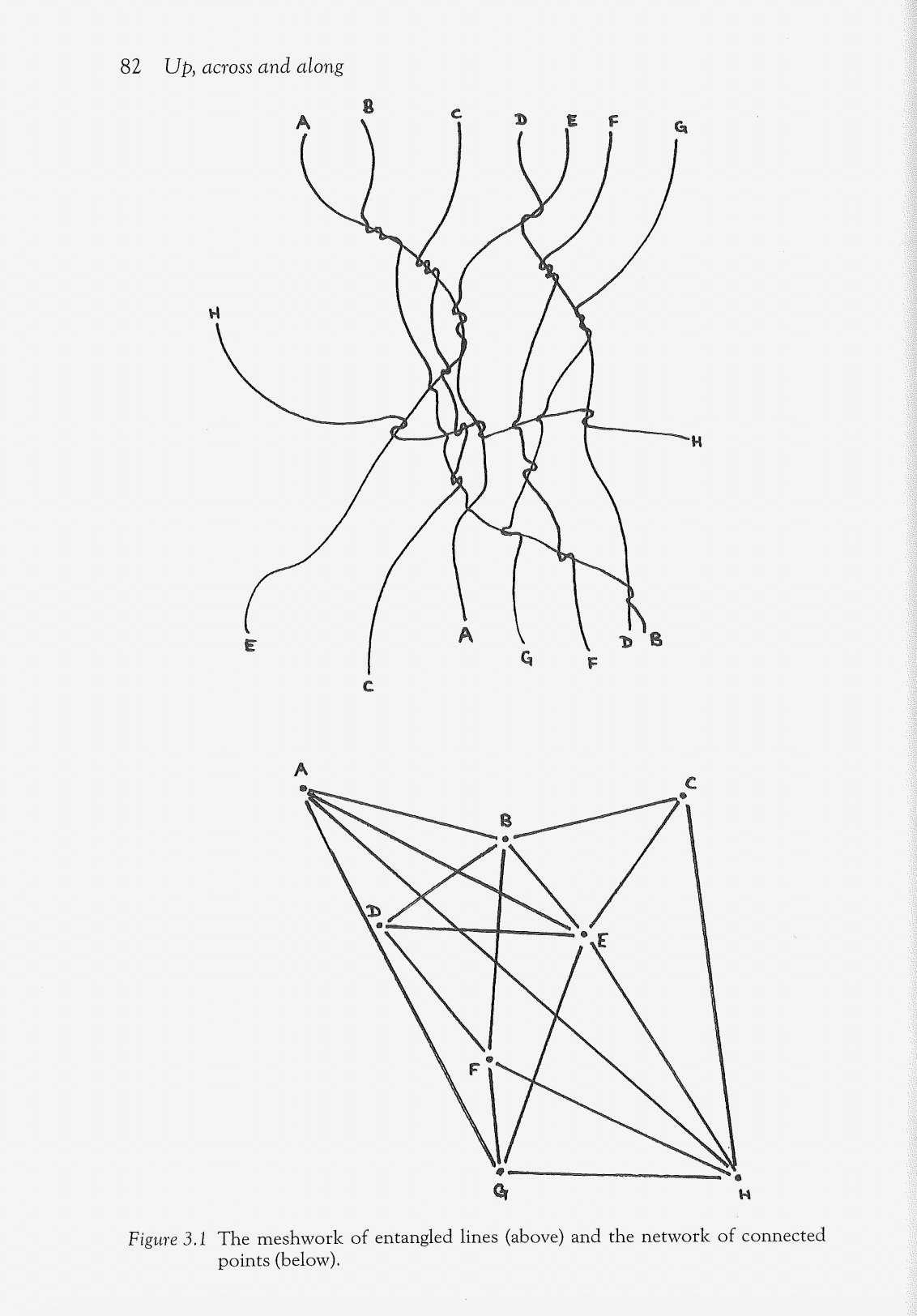

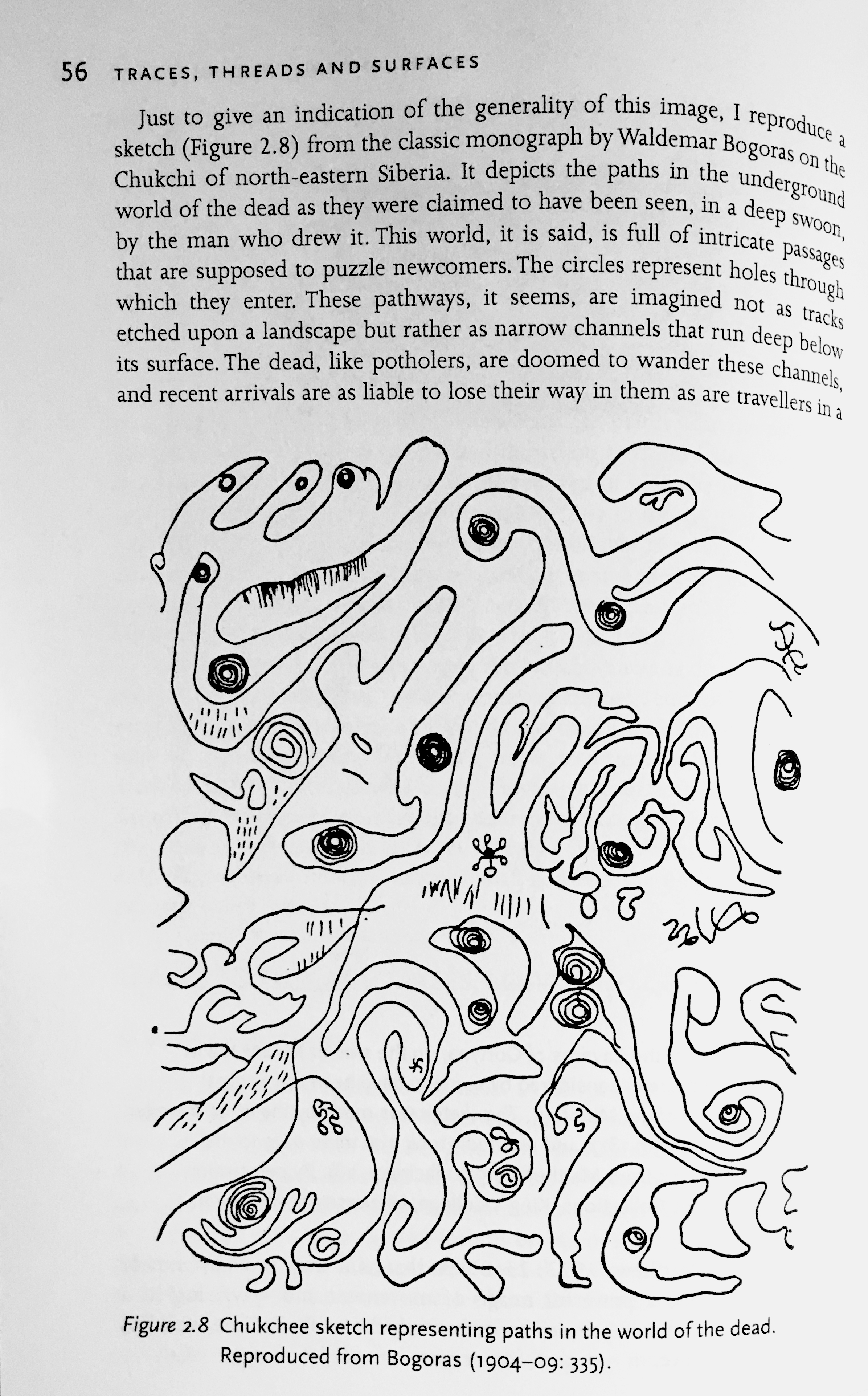
︎
There's a conscious economy of material in this piece, by using thin newsprint paper that is cheap to produce and easily recyclable. I'm interested in reversing an established hierarchy of values, whether it is in the material, in the color, or in the technique. I also want to create from limited means and this being enough, a similar economy of material which is also seen in quilting.
The thin horizontal and vertical strips that join the four pieces together in Paper Tapestry #2 are a nod to back-strap weaving. When weaving with a back-strap loom, the weaver's body determines the size of the loom, which then determines the size of the textile. This play between body-loom-textile is similar to that between gesture-tool-form which I am interested in with typography. I have some Guatemalan textiles that have a very colorful and elaborate joint sewn between pieces, which show off rather than hide what could be a size limitation.
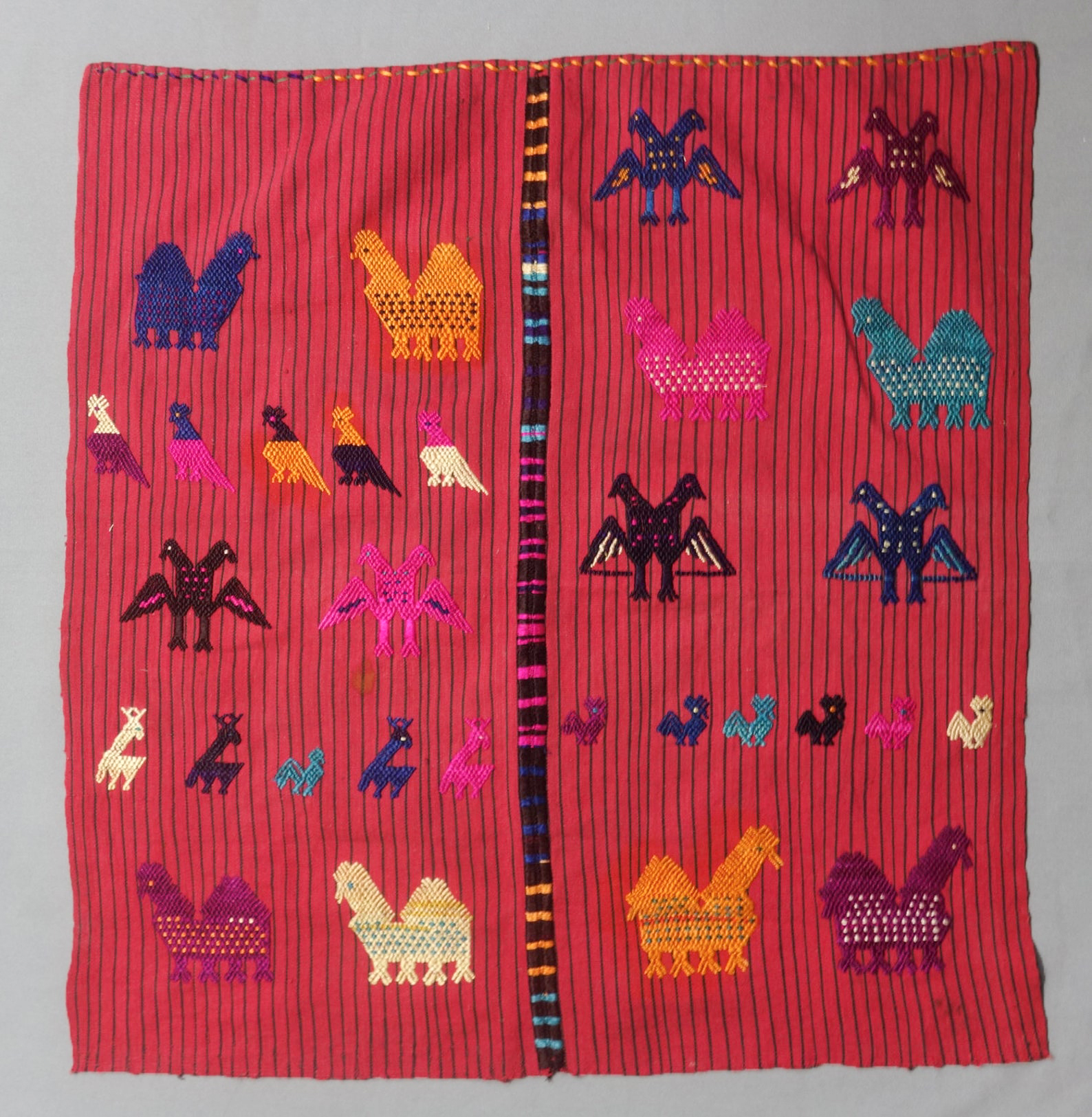
Chichicastenango tzute

Chichicastenango tzute
This conscious use and economy of material is also present in Paper Dishcloth, which was made during quarantine using newsprint as it was an easily available material. By recreating universal, everyday products like these cleaning rags, I'm reconsidering attention to humble textile objects. They hold a connection to home, yet are so universal in their design, pattern, and form, that they belong everywhere and nowhere.
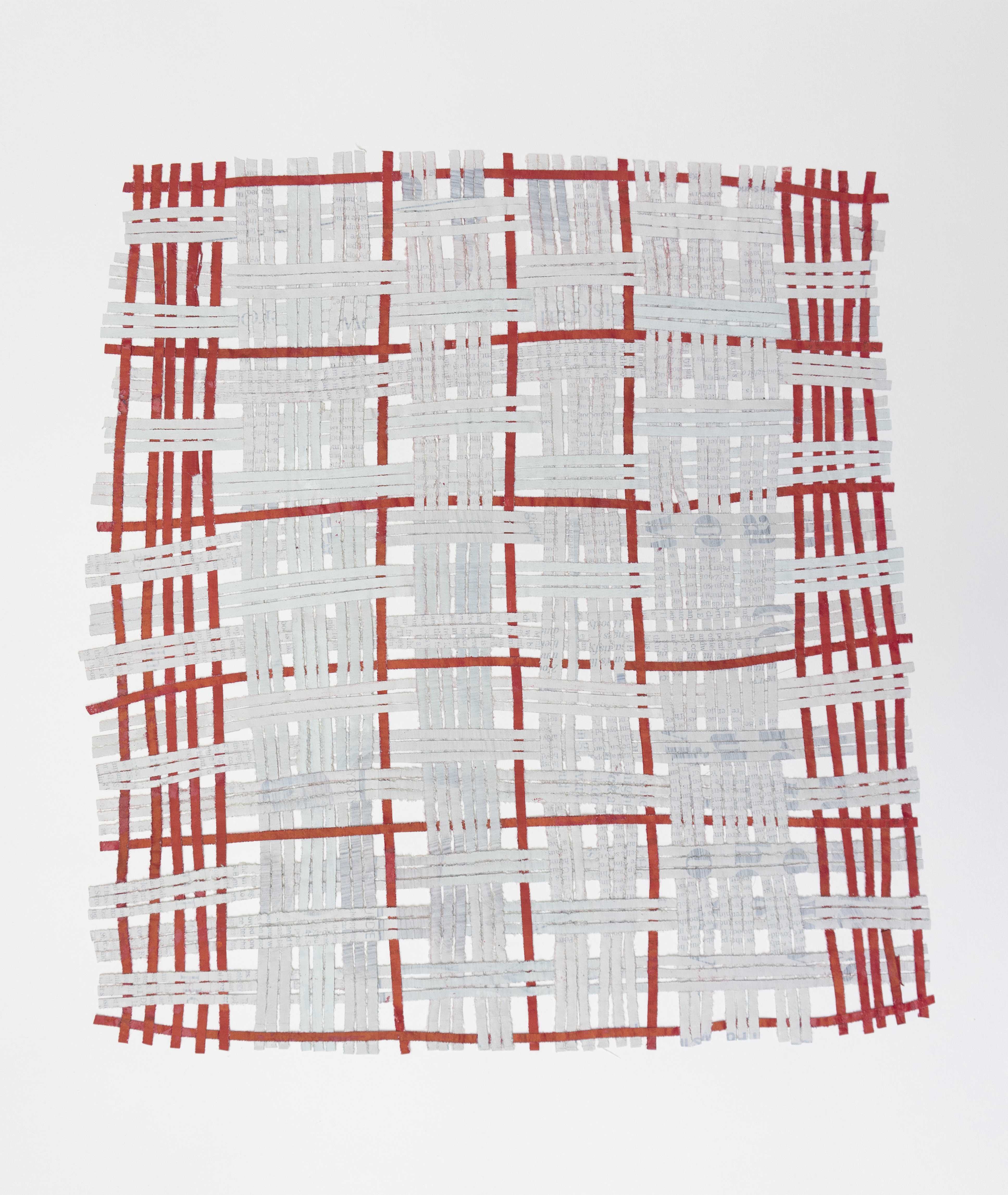

I like to browse through the dish towels and cleaning rags in my local corner store. As their stock ends and new stock comes in, they change brands and patterns, yet they're all similar in the way that they're so universal that they become invisible because of how ordinary and similar they are. Still, they have certain beauty in them, in their open weave, in their strength, and in their connection to home.
In the sketchbook, I begin with a simple paper weave in black and white, which then goes through experimentations with color, pattern, and collage, interweaving ideas and testing possibilities for what paper and line could be.

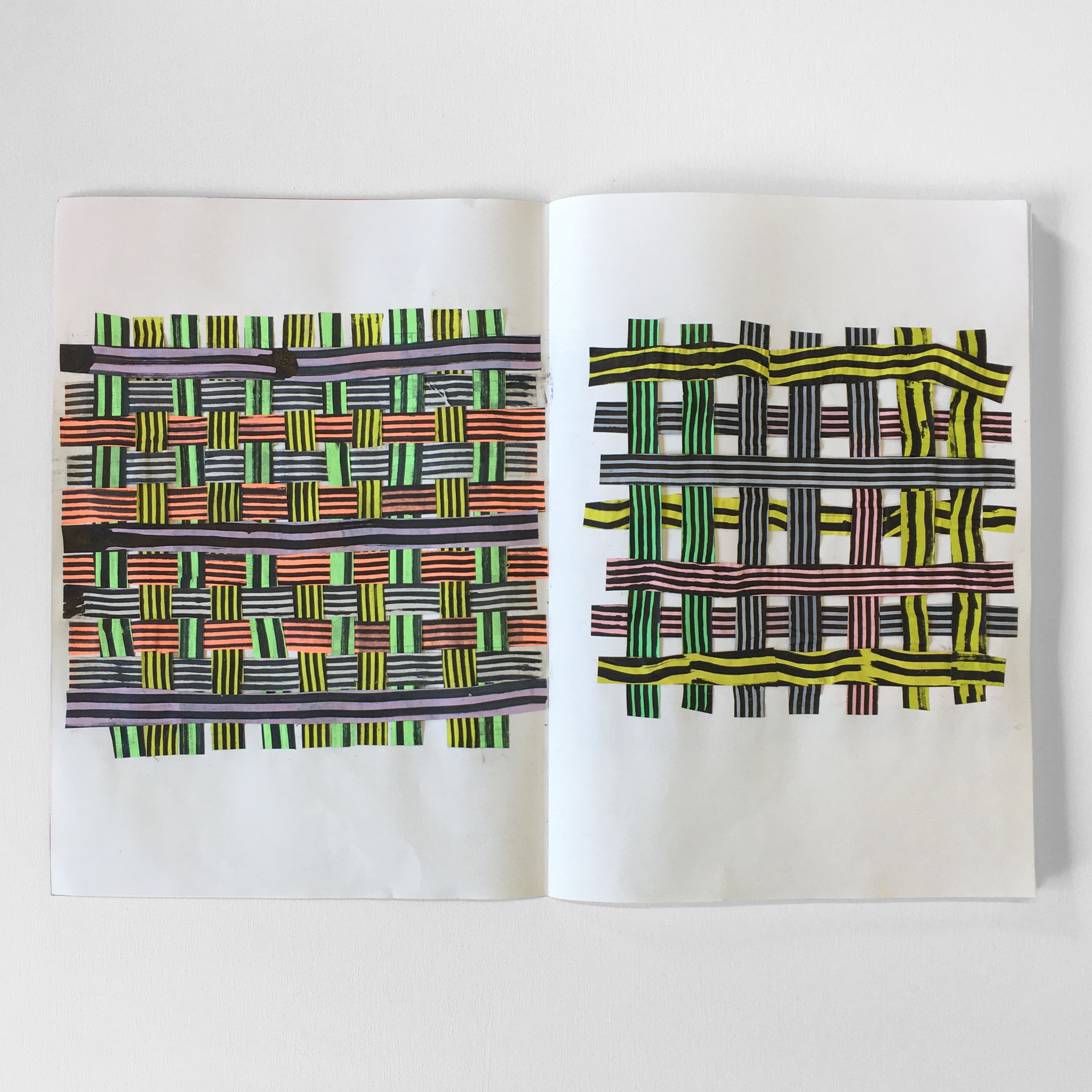

Sun and time as mark-making tools.
There are two artworks that striked me the most recently, in their simplicity and sensibility, and have remained with me since. One of these were Marie Lund's Stills, which I saw at the Weserburg Museum für moderne Kunst in Bremen. She took curtains from a house in Arizona which had been tinted by their exposure to the sun, and stretched them onto frames, showing the stains and bleaching left on the fabric. These highlights and shadows are marks made by sun and time, undisturbed by anything else. With these pieces she holds onto a moment in life and in a specific location, using materials that have been made with a gesture of their own.

The other artwork was Charbel-joseph Boutro's Sun Works, which I saw at Punta della Dogana in Venice. He shows a piece of newsprint with three rectangles inside one another in different tones of yellow. The paper had been exposed to the light in Beirut, where he's from, over one, two, and three consecutive days.
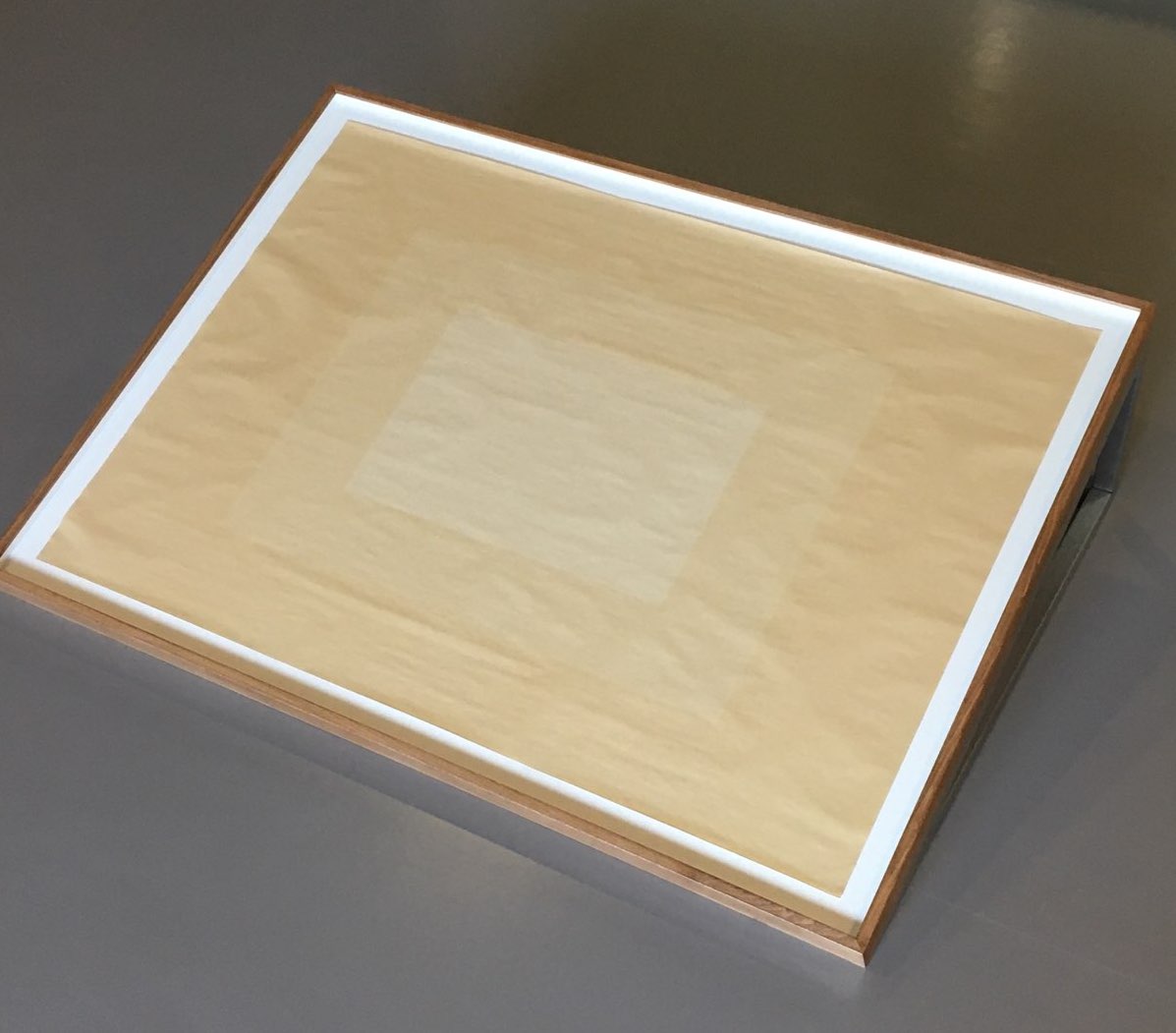
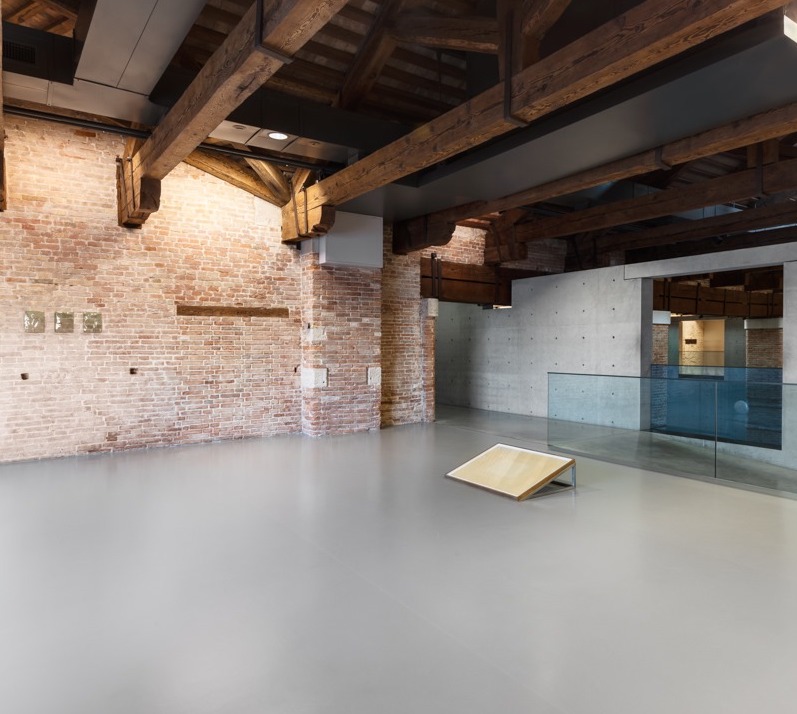
Both of these artworks attracted me in their simplicity and poetry. They're made with humble materials – curtains and newsprint – and have no other marks on them but the ones made from light and days. Sun and time are used as a mark-making tool, annotating the pieces with something ungraspable, which is a specific location and duration of a moment. The works are intimate, poetic, and enough.
Now-here, now-there written by Inês Geraldes Cardoso
Look: this is what it feels like to be doubled. Mirrored. Multiple. Across. Listen: there is a pulse to the petals, the snaking racetracks, the pressed stripes, the hanging keys. Seen and read when juxtaposed, we find the latter speak: TIEMPO / SOY YOS. As if announcing, Time, it is I; or even, I am time. But Sofía Clausse’s ceramic keys not only fuse time and the self; the added “s” in her misspelled “yo” (me) lets it be known that the individual is collective, while rendering the self palindromic: read backwards, “yos” is being (“soy”, I am). Here is Clausse’s singular talent: reversing, collapsing and compressing things upon themselves to expand the order of the possible and undo the plausible.
She asks this undoing of her tools as well: how can the printing press draw for me? Her practice exceeds limits by employing the constraints of a system, approximating a mathematical logic of inputs and outputs as a means to do away with agency. The machine operates the same way again and again, but what happens if the input misbehaves? Clausse feeds it Pressed lines (2021), a 7 metre-long painted strip of newspaper. Pressed, it becomes an expanded volume of seemingly tangled strands; a cosmogenic burst, folded and splayed to reveal the multidimensional potential of a single line.
In her Jacarandá series, petals are first exactingly cut out of painted tissue paper, then fed into the printing press to become pressed flowers. When flattened, they are transformed into two-dimensional bouquets in Pressed flowers #1 (2020), or hang limply and cartoon-like in Blossom (2020), their vibrant colours defiant in the face of material ephemerality in nature or art. Made during lockdown in London in October 2020, the works evoke the bright purple and lavender petals of the jacaranda trees that carpet the streets of springtime Buenos Aires, mirrored across hemispheres and seasons in the rust-coloured foliage of the London fall. These flowers are less memento mori and more experiments in simultaneity. Or further from still lives and closer to chronotopes – a term literally translated as “time-space” and coined by the literary scholar M.M. Bakhtin, to describe unique configurations of time and space in narrative.
True to Clausse’s inversions of both time and space, the references in her practice often find their way to her works retroactively. Synchronicities abound: she tells me of coming across the lyrics of an Argentinian children’s song after she had made the flower series. The song speaks of the sky – imbued with an automatism akin to her printing press – drawing on the pavement with the tissue paper of the jacaranda. As though the making reifies an existing connection in the universe: magical thinking that checks out. Clausse deals in parallel realms, which she connects materially as well as conceptually: the paper strips in Pressed lines (2021) are used again for the serpentine in Everything(2021), and offcuts from the tissue-paper flowers become the spidery stars that stud the canvas. These are also collaged onto the pattern of Both near and far now the same time (2021). Her works continue beyond themselves, linked through a circular production process. Like matter itself, nothing is lost; for Clausse, things merely shape-shift to become each other.
This is true of her Paper grid rags (2021). Subversively mimetic, they are woven out of thin painted newspaper strips – rags evacuated of use value and frayed at the ends. Unlike sturdy everyday dishcloths, they are impossibly fragile. Sometimes she hangs them quite literally by a thread. More recently one has been turned up at the corner, revealing the inverse of its grid. And it catches stars too, lodged in its tessellated pattern. Suddenly the rag becomes an image of space-time: the mesh-like diagrams used by physicists to visualise the multi-dimensionality of the universe. Time-space and space-time collide in the cosmic vernacular of Clausse’s work, fusing to generate forms, which are, in Bakhtin’s words, of “the most immediate reality.”1
In Ali Smith’s How to Be Both, the protagonist’s mother asks, “which comes first?...What we see or how we see it?”2 With Clausse, it is the two at once. Which is to say, her works are a practice in being both. In her hands a flower is a supernova; a press is a drawing instrument; a line is a labyrinth; a dishcloth is the universe; a petal is a place transported across time; and a flower-lined pavement is the work of the sky. Look: the leaves fall in London. Listen: The sky is drawing/ On the pavement / With the foam and tissue paper / Of the jacaranda3.
Now-here, now-there.
- Inês Geraldes Cardoso
1 Bakhtin, Mikhail M. “Forms of Time and of the Chronotope in the Novel: Notes toward a Historical Poetics”. Mikhail M. Bakhtin. The Dialogic Imagination: Four Essays. Ed. Michael Holquist. Trans. Caryl Emerson and Michael Holquist. 1981. Austin: University of Texas Press, 1990d. 84-258.
2 Smith, Ali. How to be Both. 2014. London: Penguin. 104.
3 Translated lyrics from the childhood song Jacarandáby the Argentinian poet, novelist, musician, playwright, writer and composer, María Elena Walsh. Original lyrics: El cielo en la vereda / Dibujando está / Con espuma y papel de seda / Del jacarandá.